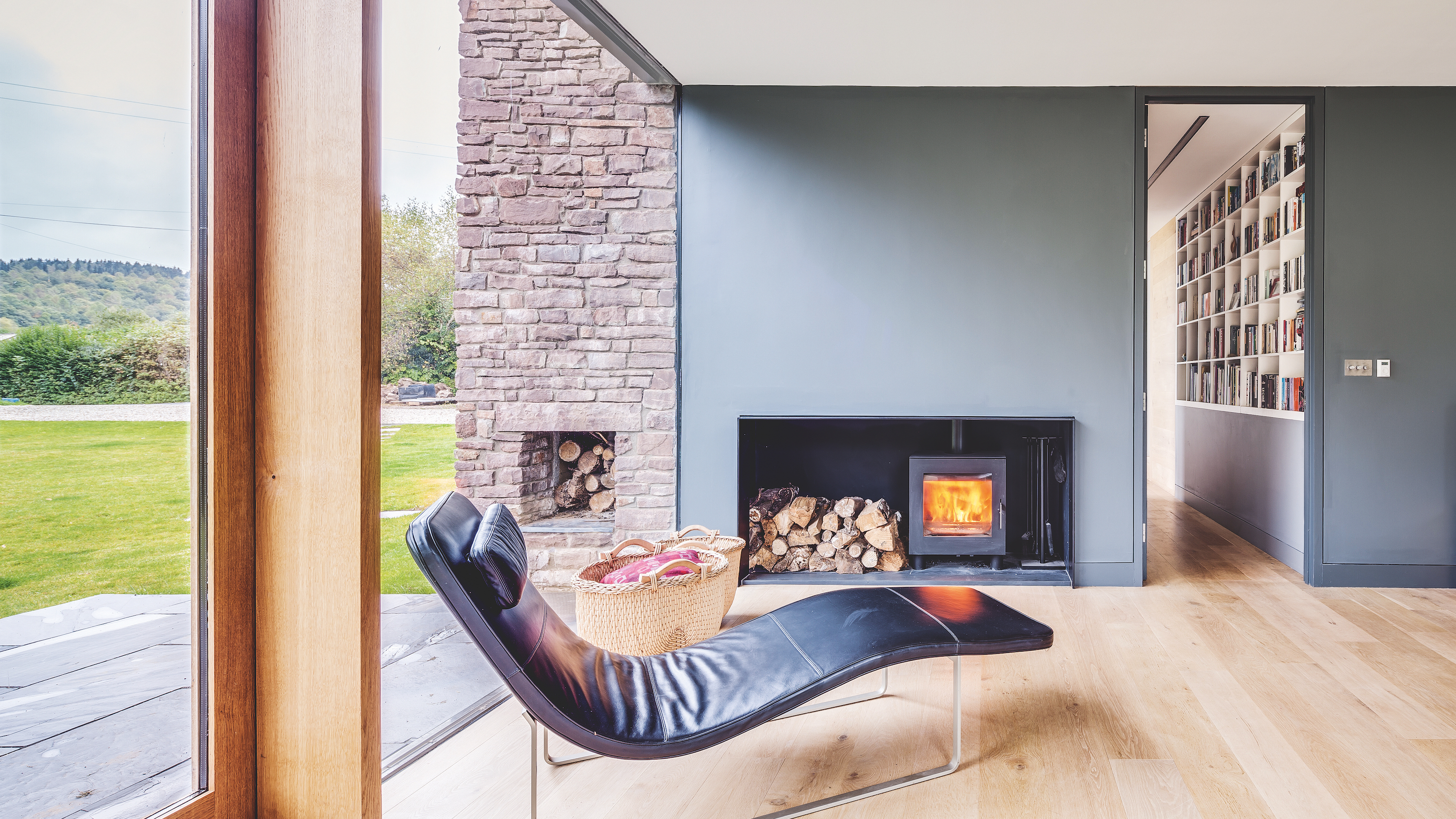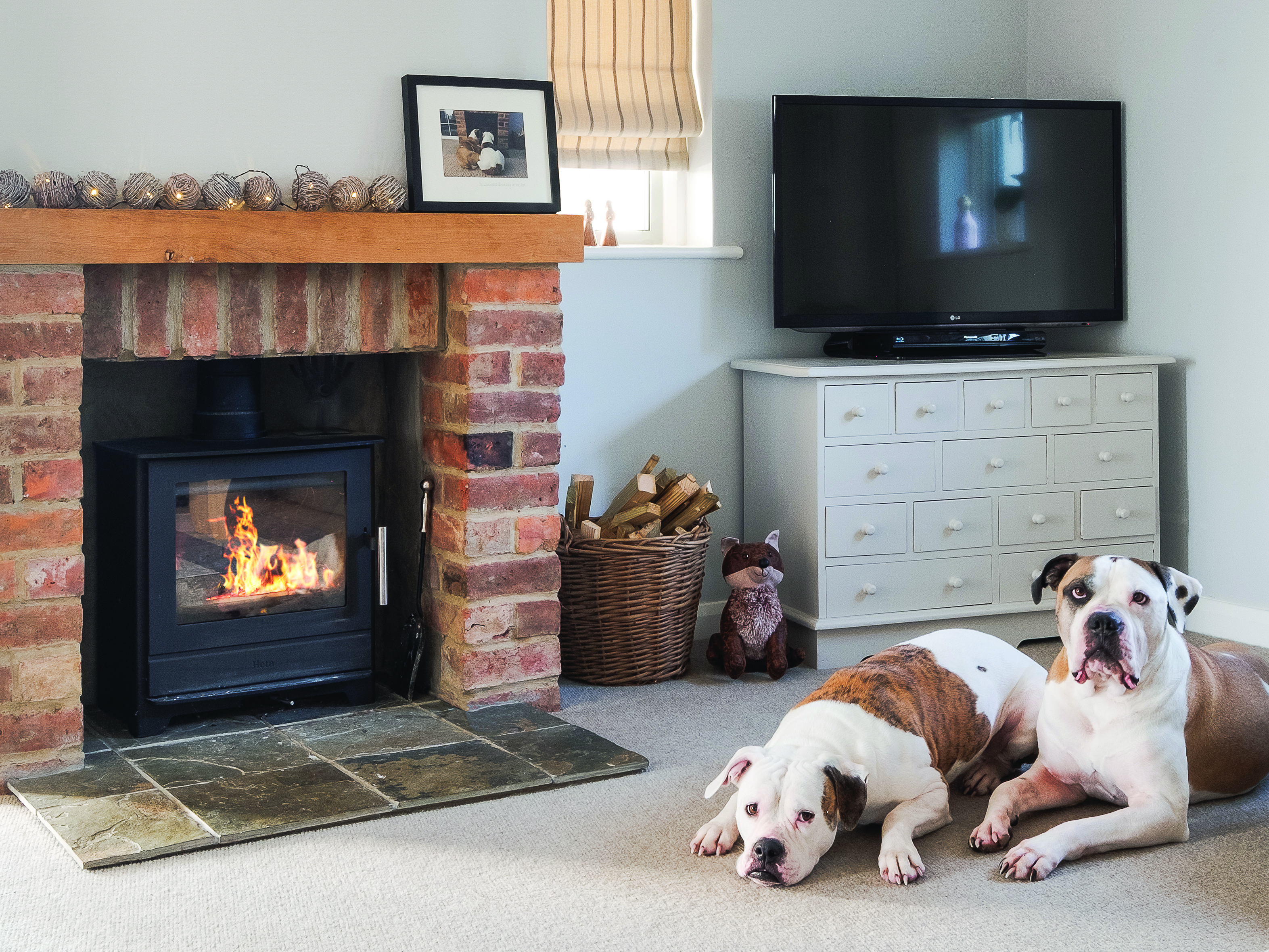Avoiding 'cold plugs': What every woodburner owner needs to know before lighting a fire after a cold snap
Industry body HETAS has warned of the effects of a cold snap on your woodburner. Find out what 'cold plugs' are and how to avoid them when lighting your stove in cold weather

HETAS, the not-for-profit organisation which provides Certificates of Compliance for solid fuel appliances, has warned woodburning stove users about the dangers of 'cold plugs' after a significant drop in temperature.
Large swathes of the UK recently dropped to minus temperatures overnight and as such, thousands have been relying on their log burners to warm their homes.
"With the current forecast predicting the potential for a sudden drop in temperature and weather warnings being issued as snow and ice creep in, we’re urging those with woodburning stoves to carry out steps in order to limit the risk a cold plug can create," comments Bruce Allen, CEO at HETAS.
"Solid fuel stoves are ideal for this time of year, but it is important that they are properly maintained and understood by users to ensure optimum safety and efficiency during the weather where you need them most”.
Here's what you need to know about cold plugs — and importantly, how to avoid them.
What is a cold plug?
A cold plug forms inside a chimney/flue when temperatures plummet quickly and a chimney is left to go cold. The cold, heavy air within the flue can act like a 'plug' and subsequently, if precautions are not taken, can result in smoke re-entering the stove or room rather than being drawn up the chimney.
There are some homes which may be more prone to this issue than others and scenarios in which cold plugs are more common, as HETAS explain: "There are no immediate signs within a chimney that may identify a cold plug scenario occurring, however external elements may give an indication on when best to follow practice on resolving the issues with a lack of flue draught from a cold plug scenario, including:
- Cold weather days or days experiencing a significant drop in temperature from the previous day
- External metal chimneys or masonry chimneys located on an outside wall
- Short flues or flues designed with significant offsets with a long run until the next change in direction
- After periods of prolonged shutdown when the appliance is not in use
- Within a chimney that has not been regularly serviced.

Are cold plugs dangerous?
If you light your stove immediately after a cold snap without allowing the chimney to warm up, a cold plug can form and consequently smoke can be pushed down and out of your stove, rather than being drawn upwards and out of the chimney.
This can be dangerous as smoke inhalation risk is increased, while unpleasant smells and detritus might find its way into you living room and home when the stove door is opened.
"Cold plugs exist due to cold air being contained within a chimney that cannot be easily removed within normal environments or drawn up the chimney into the outside atmosphere. Lighting a large fire using logs within an appliance experiencing cold plug may lead to incidents of spillage where products of combustion cannot be easily dispersed out the chimney," state the experts at HETAS.
Ideally, you will warm the chimney's internal temperature gradually to do away with the cold plug.
How can I avoid a cold plug?
If temperatures drop overnight and your stove has not been in use (allowing the chimney to cool down) there are measures HETAS advises to limit the risk of cold plugs.
One is to leave your stove door open for at least 30 minutes before lighting and when not in use. This will allow the stove and flue to acclimate itself to the home's ambient temperature so the shock will not form a plug.
Unlike the usual method for how to light a log burner, HETAS also advise using the top down method of lighting a fire – whereby logs are placed at the bottom with kindling on top – after it has not been in use for some time. "The upside down/top down method aids in the flue getting up to temperature more quickly and removes the need to open the appliance door to add fuel to the kindling which means there is less of a chance of the combustion chamber cooling," according to their website.
"Once the well ignited kindling has burnt through, the flue shall be warm and the logs which the kindling has sat upon should now be charred and ignite cleanly."
They also advise that the use of an electric firelighter (here's an example from Amazon) for a few minutes before starting a fire as an effective way to warm the flue.
Finally, having your chimney sweep at least once a year will help to reduce the risk.
Get the Homebuilding & Renovating Newsletter
Bring your dream home to life with expert advice, how to guides and design inspiration. Sign up for our newsletter and get two free tickets to a Homebuilding & Renovating Show near you.
Amy is an interiors and renovation journalist. She is the former Assistant Editor of Homebuilding & Renovating, where she worked between 2018 and 2023. She has also been an editor for Independent Advisor, where she looked after homes content, including topics such as solar panels.
She has an interest in sustainable building methods and always has her eye on the latest design ideas. Amy has also interviewed countless self builders, renovators and extenders about their experiences.
She has renovated a mid-century home, together with her partner, on a DIY basis, undertaking tasks from fitting a kitchen to laying flooring. She is currently embarking on an energy-efficient overhaul of a 1800s cottage in Somerset.

